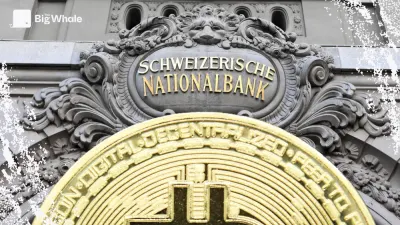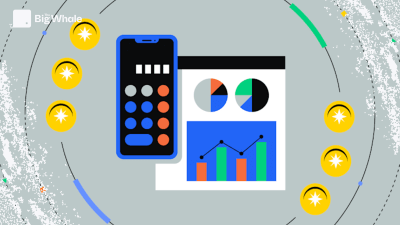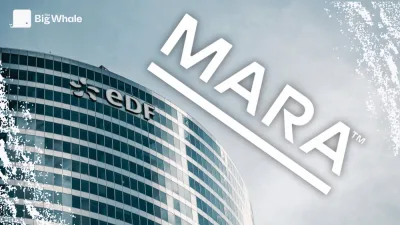TBW - Fee switch on Aave: how much can stakers earn?

Aave, a key pillar of decentralised finance (DeFi), is establishing itself as the leading cryptocurrency lending and borrowing platform. Operating without intermediaries thanks to smart contracts, the protocol allows users to deposit digital assets to generate interest or borrow funds in exchange for collateral.
With more than $18.6 billion in deposits and $11.5 billion in borrowings, Aave now dominates the lending market.
Aave's native token, AAVE, is at the heart of the debate, driven by a new governance proposal that could redefine the rules of the protocol.
The governance will soon have to validate the proposal
The "fee switch" is a key mechanism in decentralised finance (DeFi), allowing part of the costs generated by a protocol to be redistributed to token holders. This model thus creates a form of revenue sharing for network participants.
With this dynamic in mind, Aaave is entering a strategic turning point. A new governance proposal, published on 4 March by Marc Zeller (head of the largest vote delegation entity, ACI), introduces the first phase of "Aavenomics". This follows on from an update unveiled in July 2024 and validated by governance in August.
The aim? To rethink the protocol's business model by redistributing part of the surplus revenue to users.
Although governance has yet to express an opinion on this proposal, it will probably be a formality given ACI's considerable influence.
Since the adoption of this new governance last summer, the Aave DAO's cash flow has jumped by 115%, according to Marc Zeller. A development that reinforces the stakes of the current debate around revenue sharing within the protocol.
>> Uniswap, Aave, Sky: What strategies for the "OGs of the DeFi"?
The key measures of the Aavenomics
The new AAVE governance proposal aims to restructure revenue distribution and strengthen the attractiveness of staking.
Here are the main measures detailed:
Revenue distribution: A "Buy and Distribute" mechanism will be put in place, allocating $1 million per week to the buyout of AAVE, which will then be redistributed to stakers.
Sharing of GHO revenues: 50% of revenues generated by the issuance of GHO will be paid back to AAVE stakers, providing a new source of return.
End of LEND → AAVE migration: The LEND token, left over from the first version of the protocol, will be permanently removed.
Creation of the Aave Finance Committee (AFC): A committee dedicated to optimising revenues and managing the protocol's funds will see the light of day.
Launch of the Umbrella Programme: A scheme aimed at securing the ecosystem's funds and strengthening its resilience over the long term.
Through these measures, AAVE is seeking to boost its business model, build staker loyalty and create a virtuous circle of value for its token.
>> Compound, Aave, Morpho: how lending is reinventing itself in DeFi
What impact will AAVE's buyback programme have on token holders?
The Aave protocol is preparing to launch a buyback and distribution programme for its native token, AAVE, to the tune of $1 million a week for six months. An initiative that is attracting interest from investors, not least because of its potential effect on staking returns.
To assess the impact of this initiative, several parameters need to be examined. Firstly, AAVE's current market capitalisation is $3.3 billion. If the buyback programme is extended for a year, this would represent $52 million in cumulative purchases, or 1.58% of AAVE's total supply bought back each year and redistributed to stakers.
Currently, around 19% of AAVE's total supply is staked. Based on this data, the average annual return for stakers benefiting from this redistribution would reach 8.29%.
Another factor reinforces this return: the redistribution of part of the revenue generated by GHO, the stablecoin issued by Aave. The latter operates on a collateralisation model, where borrowers must post collateral to redeem GHO. Aave receives interest on these loans, which generates revenue for the protocol.
Currently, the GHO offering amounts to $186 million, with a yield of 6.45%. The revenue generated by these loans is estimated at $12 million a year, 50% of which will be redistributed to AAVE stakers, for a total of an additional $6 million each year.
Combining these two sources of distribution (redemption and GHO revenue), the total amount returned to stakers would reach $58 million a year, bringing the total APR to around 9.25%.
Variables to watch
However, these estimates remain dependent on a number of factors: changes in the price of AAVE, the effective duration of the buyback programme, the profitability of the GHO and the number of tokens staked.
Another factor that could boost these revenues is the introduction of the SVR (Stable Variable Rate) based on Chainlink, which aims to optimise the management of bad debts in the event of market turbulence. This mechanism could generate more than $10 million in annual revenues for Aave, helping to fund Aavenomics.
Here are a few tables illustrating the different return possibilities, bearing in mind that there are others:
.png)
.png)
.png)
Tables show approximate APR projections based solely on the governance proposal.
>> Paul Frambot (Morpho Labs): "Aave is a bank whereas Morpho is an infrastructure for banks"
A very well received proposal
The announcement of AAVE's buyback and revenue redistribution programme immediately caused the market to react, propelling the token up 10% to 15% in a matter of hours. This reaction reflects investors' enthusiasm for the fee switch, which introduces a competitive return for stakers estimated at 9.25% APR. This return is based on two levers: on the one hand, a weekly redemption programme of 1 million dollars, or 1.58% of the total supply of AAVEs redeemed each year. Secondly, the redistribution of income generated by the GHO stablecoin, with 50% of the interest earned being paid back to stkAAVE holders.
This mechanism could create buying pressure on the token, potentially supporting its price in the long term. However, the sustainability of this dynamic will depend on several factors: the trend in the price of AAVE, the volume of tokens staked and the stability of the protocol's revenues. If these conditions remain favourable, this new proposal could strengthen the attractiveness of staking by encouraging holders to keep their tokens for longer.
The activation of the fee switch was particularly eagerly awaited by the community, and not just on Aave. This redistribution model brings a new utility to the token, strengthening its appeal as a revenue-generating asset. AAVE generated around $86 million in revenue in 2024, while the DAO's cash position reached $115 million at the beginning of March 2025, according to DeFiLlama data. With this new structure, AAVE moves closer to a dividend-paying share, a powerful marketing argument to attract new investors.
Beyond Aave, this initiative could inspire other DeFi projects to set up revenue redistribution mechanisms, paving the way for more sustainable and attractive decentralised finance. If this model proves effective, it could redefine the sector's standards and make it more attractive in the face of traditional financial alternatives.



